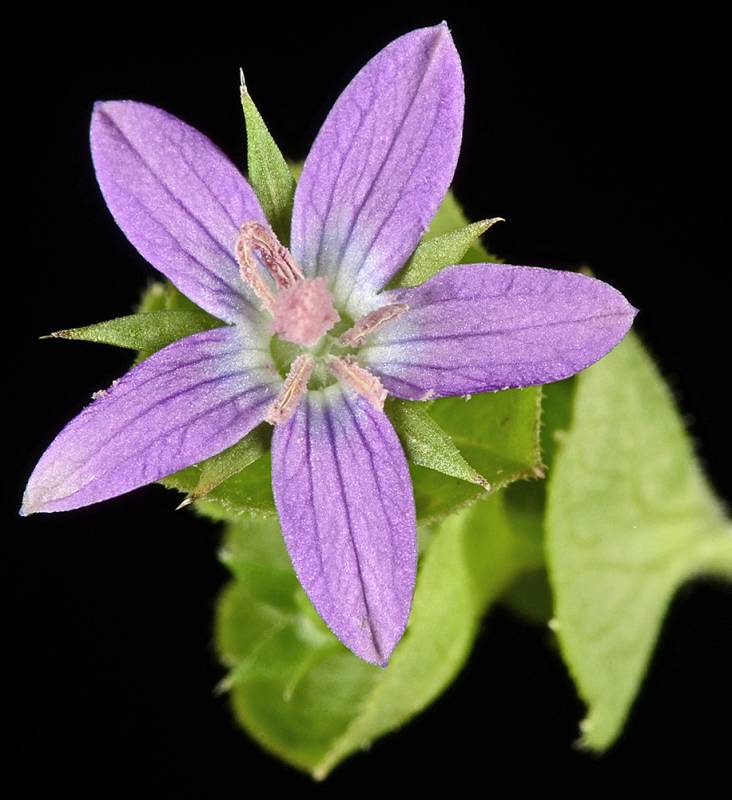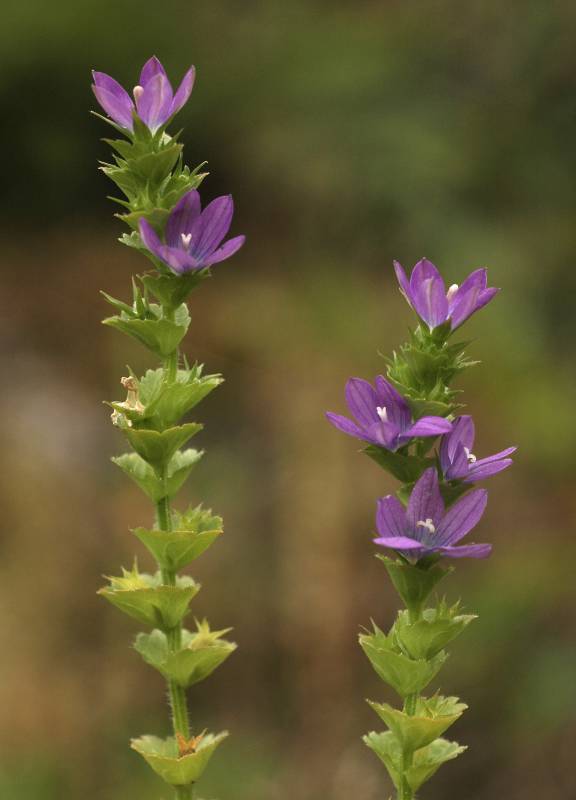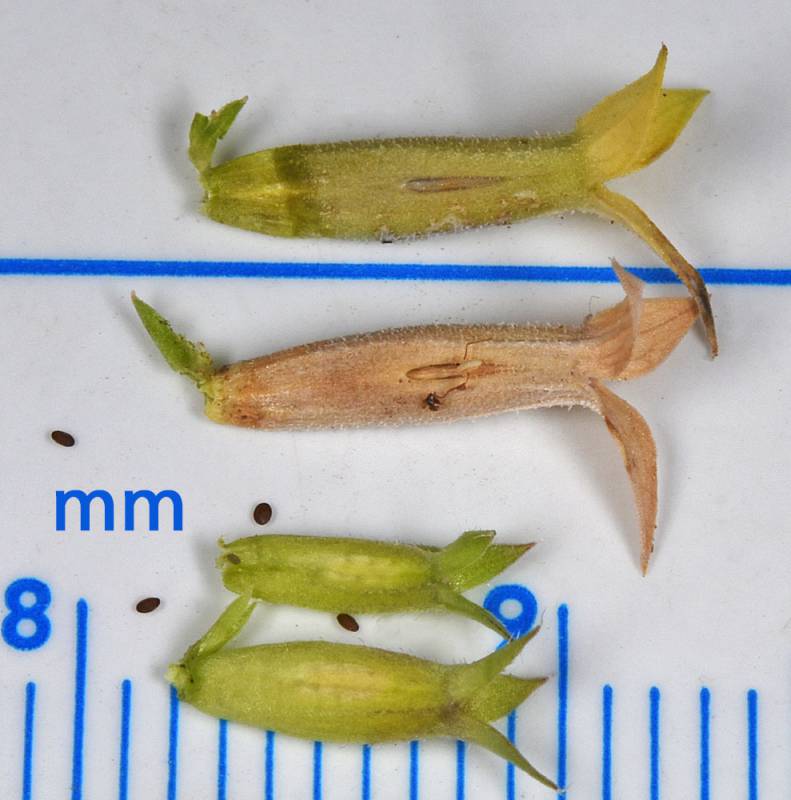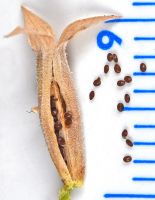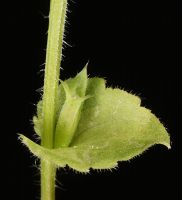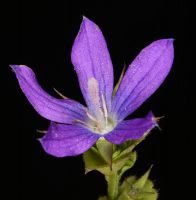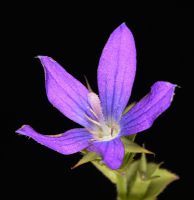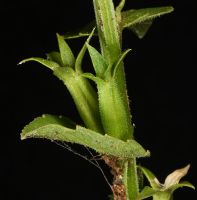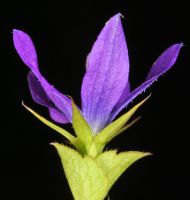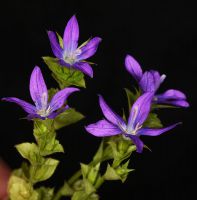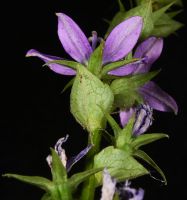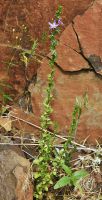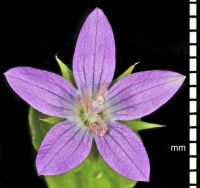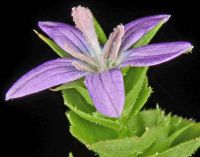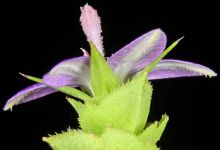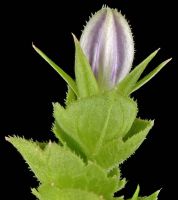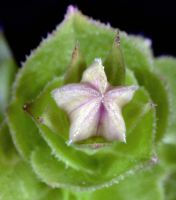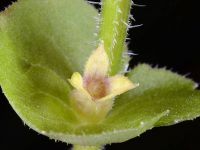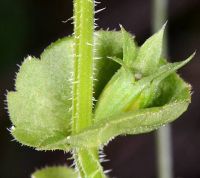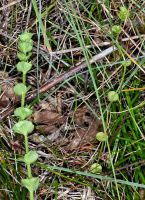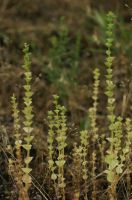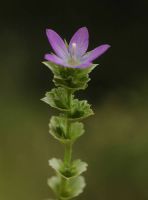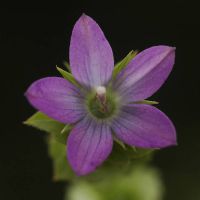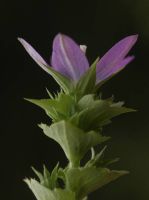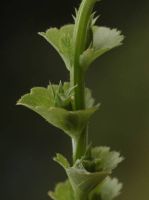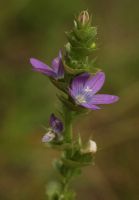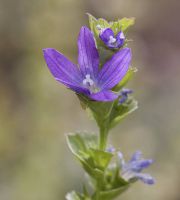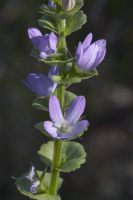Distribution: Occurring on both sides of the Cascades crest in Washington; British Columbia to California, east across most of North America to the Atlantic Coast.
Habitat: Various habitats, from the valleys and plains to moderate elevations in the moutains.
Flowers: May-August
Origin: Native
Growth Duration: Annual
Conservation Status: Not of concern
Erect annual herbs, the stems erect, usually simple, 1-6 dm. tall, the surface rough.
Leaves alternate, sessile, cordate-clasping, rotund-ovate, palmately veined, the leaves 0.5-3 cm. long and wide, or the lowermost ones narrower, more obovate, and short-petiolate.
Flowers sessile in the axils of the middle and upper leaves, 1-several in each axil, in a leafy, spike-like arrangement; calyx lobes 5, divided to the base, narrowly triangular and pointed, 5-8 mm. long; corolla united, regular, the 5 lobes longer than the tube, 8-13 mm, long, deep purple to pale lavender; stamens 5, free from the corolla and from each other; the lower flowers do not open and the calyx of these is smaller and 3- or 4-lobed; ovary inferior.
Capsules oblong, 2- or 3-celled, about 1 cm. long in the open flowers, half that size in the others.
Publication: Amer. Midl. Naturalist 3(7): 192. 1914.
Specularia perfoliata (L.) A. DC.
PNW Herbaria: Specimen records of Triodanis perfoliata in the Consortium of Pacific Northwest Herbaria database
WA Flora Checklist: Triodanis perfoliata checklist entry
OregonFlora: Triodanis perfoliata information
E-Flora BC: Triodanis perfoliata atlas page
CalPhotos: Triodanis perfoliata photos

